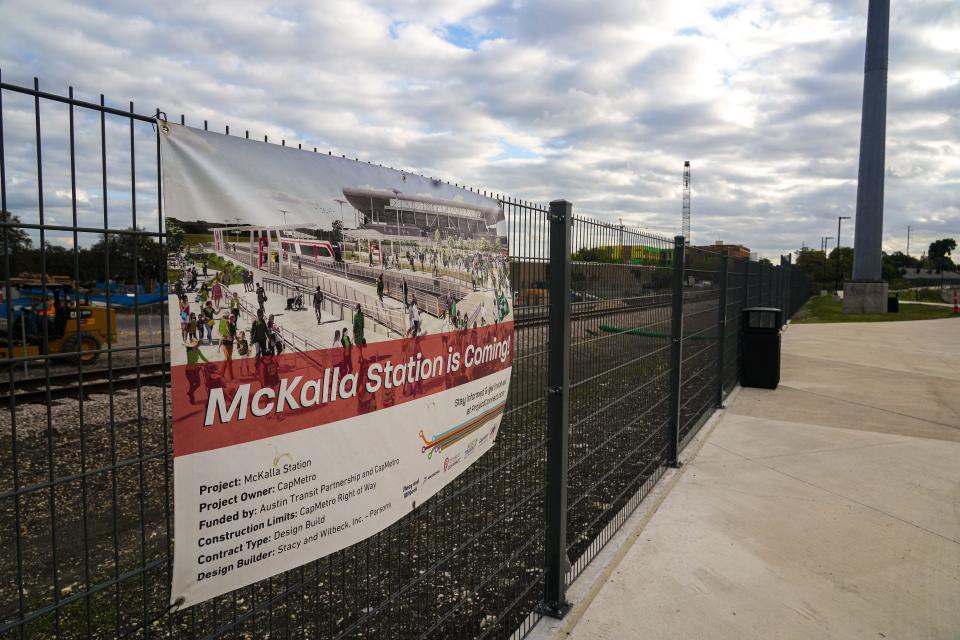Economic worries abound, but Austin's unemployment holds at 2.8%. How long will that last?
Economic worries abound amid rising interest rates, layoff announcements and a struggling stock market. But you wouldn’t know it from the latest Austin-area unemployment figures.
The region’s unemployment rate for October came in at 2.8%, according to data from the Texas Workforce Commission that haven't been adjusted for seasonal factors. That number is identical to September and a level that economists generally consider so low that it means most people who want a job have one.
In addition, a record 1.327 million people were employed in the Austin metro area last month — breaking the previous record of 1.319 million set in March and well above about 945,000 a decade ago — as a deluge of new residents in recent years has boosted the local population and the demand for goods and services.
Here are some key takeaways from the latest unemployment numbers:
More:JPMorgan Chase chief Jamie Dimon bullish on Austin despite economic uncertainty
Just a matter of time?
While the jobless rate is extremely low, it's also considered a lagging indicator, meaning it doesn't necessarily reflect the latest trends in the economy.
For the Austin metro area — which includes Travis, Williamson, Hays, Bastrop and Caldwell counties — that means issues such as the slowing housing market and the recent announcements of layoffs by some prominent high-tech companies with substantial local operations might not be fully reflected in the figures yet.
"I wouldn't be surprised to see (the local jobless rate) go up a couple of points" over the next few months, said Jon Hockenyos, president of Austin-based economic analysis firm TXP Inc. “I think it is pretty unrealistic to expect that there won’t be some impact on us" as the broader national economy slows.
As things stand, however, Hockenyos said the October figures are still indicative of what has been an extremely tight labor market, in which businesses in the region have been struggling to find and retain enough employees.
"We are still working off the fact that there is a labor shortage" locally, he said.
More:Facebook/Meta changes plans, won't move into office space in new Austin tower

Some sectors to watch
The region's big high-tech industry appears to be clicking on all cylinders, at least when it comes to the most recent employment figures, but it will be a bellwether that bears monitoring in the future.
The number of local workers in the employment category that includes much of the high-tech industry came in at 163,000 last month, according to the workforce commission, up 2.6% from September and up nearly 8% from October 2021.
Still, a flurry of recent layoff announcements by tech companies with big Austin operations — including Amazon and Facebook parent Meta Platforms — might affect those figures over the next few months.
The construction sector, meanwhile, has been mixed amid what has been a monthslong cooling trend in the previously red-hot local housing market.
Local employment in the sector that includes construction added 100 jobs in October — bringing the total to 73,300 — but remains down by nearly 2%, or 1,400 jobs, from the same month a year ago. Jobs for specialty trade contractors, many of whom work at construction sites, climbed by 200 last month and are up by 800 over the past year.
If homebuilding slows over the coming months, Hockenyos said there's a chance other types of construction could pick up the slack, such as government-funded road and infrastructure work. But it's not a given that will happen.
“There could be some support there (from state and federal spending), so we will have to wait and see," he said.
More:Texas comptroller: As potential recession looms, state sitting on billions in tax revenue
Leisure looking up
Hard hit by the coronavirus pandemic, the region's renowned leisure and hospitality sector has come roaring back in recent months.
The trend continued in October, buoyed by the U.S. Grand Prix at Circuit of the Americas and the Austin City Limits Music Festival.
Austin-area leisure and hospitality businesses, including hotels, restaurants and performance venues, employed a total of 146,300 people last month — up by 3,700, or 2.6%, from September.
The sector also has led all local job growth on a percentage basis over the past 12 months, increasing its workforce 15.5%, or by 19,600 people, since October 2021.
Beating the state and nation
Fueled by a highly educated workforce and the presence of state government, the University of Texas and other local colleges and universities, the Austin-area economy routinely outpaces its state and national counterparts.
October was no different.
Unadjusted for seasonal factors, the statewide unemployment rate registered 3.8% last month and the U.S. unemployment rate registered 3.4%, compared with 2.8% for the Austin metro area.
Regardless, state officials heralded the latest results overall, noting that Texas has added 694,200 positions in the past 12 months.
"Ten of 11 major industries in Texas have rebounded to their pre-COVID levels and beyond, translating to more jobs in more industries for more Texans,” said Julian Alvarez, a member of the workforce commission who represents labor.
This article originally appeared on Austin American-Statesman: Austin's jobless rate stable at sub-3%: Here's what you need to know
